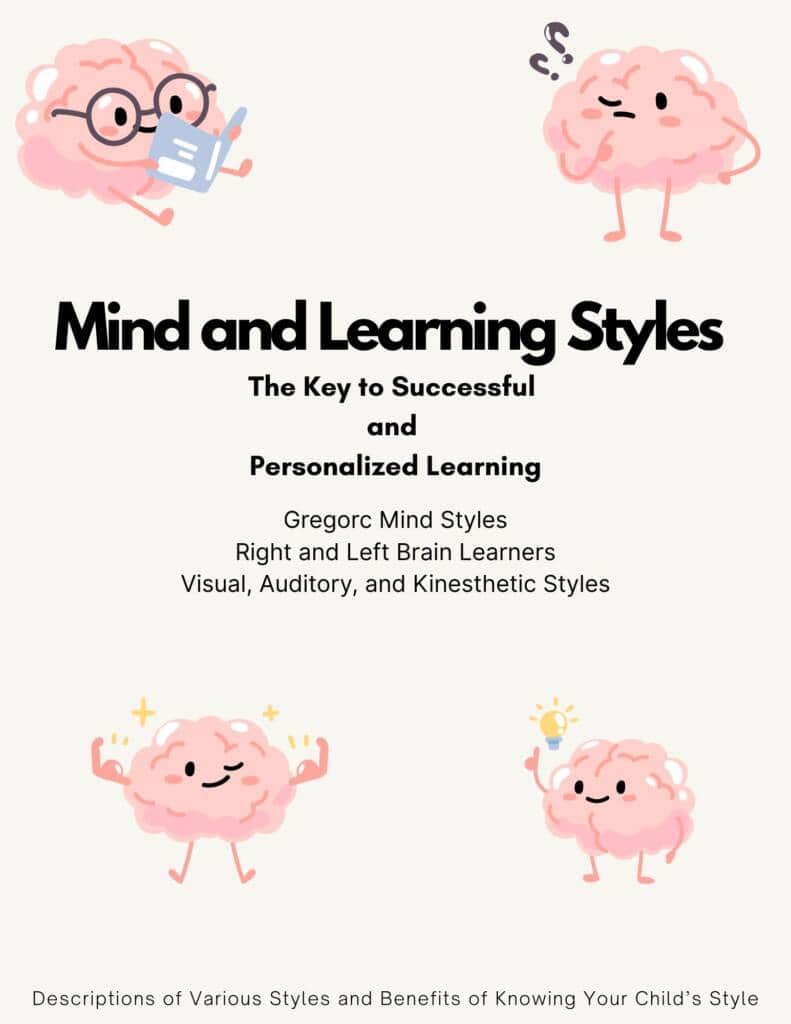This post about the Traditional Homeschool Method is the fifth post in a 10 part series about different homeschooling methods.
This series includes the following homeschooling methods:
- Classical Homeschool
- Charlotte Mason
- Montessori
- Unschooling
- Traditional or School at Home
- Project Based Learning
- Eclectic or Mixed Approach
- Unit Studies or Thematic
- Delight Directed or Interest Led Learning
- Waldorf
Traditional Homeschool Method : Bringing the Classroom Home with Confidence and Structure
When most parents first hear the term “homeschooling,” their minds often jump to a familiar image: children at the kitchen table, working through textbooks and worksheets while mom grades papers nearby.
That picture?
It’s the picture perfect image of Traditional Homeschooling, also known as the School-at-Home method.
If you’re a homeschool mom who thrives on structure, enjoys clear expectations, and wants to closely mirror the school experience at home, this approach may be your ideal fit.
Whether you’re new to homeschooling or simply looking for a method that feels grounded and familiar, this blog post will walk you through what traditional homeschooling is, how it works, and why it may be the best choice for your family.
A number of families begin homeschooling using this method and as they get a feel for what works and doesn’t work for them. They begin to modify their method and explore others that may best meet their needs and their child’s learning style.
What Is the Traditional or School-at-Home Method?
Traditional homeschooling, or “school-at-home,” is exactly what it sounds like—it’s homeschooling that closely resembles the environment, schedule, and curriculum of a traditional public or private school.
The key difference? It all happens in the comfort of your home and under your guidance.
This method often includes:
- Structured lesson plans
- Assigned textbooks and workbooks
- Possibly online live or self-paced courses
- Daily schedules
- Quizzes, tests, and grading
- Clear benchmarks and academic goals
Many parents feel more comfortable starting with this method because it offers a predictable framework.
If you or your spouse grew up in a conventional school system, this model likely feels the most familiar—and that’s not a bad thing.
Key Features of the Traditional Homeschool Method
1. Structure and Routine
Traditional homeschooling follows a school-like schedule. Many families begin lessons at a set time each morning, rotate through subjects, break for lunch, and end around the same time each day.
Children know what to expect, and parents have a solid roadmap to follow. For many families, this predictability is a huge stress reliever.
2. Textbooks and Workbooks or Online Coursework
Most families using this method rely heavily on textbook-based curricula, often complete with teacher’s guides, student workbooks, and even testing schedules. Programs like Abeka, BJU Press, and Saxon Math are commonly used because they provide everything needed to run a school-like program at home. These curricula also offer online options, recorded videos and live online classes.
This course is an example of self-paced online course that fits into the Traditional Homeschool method.
Here is a Free Sample Video and Worksheet Lesson for Brainstorming a 5 Paragraph Essay.
This format allows for easy recordkeeping and consistency across subjects, which is especially helpful in states with stricter homeschooling laws.
3. Clear Academic Standards
Because traditional homeschooling mimics school, it often aligns with grade-level expectations. If your child may return to public or private school later, this method can ease that transition by keeping them on track with their peers.
You’ll often find testing and grading woven into the routine, which can help parents monitor progress and give children a sense of accomplishment.
4. Parent-as-Teacher Role
In this model, the parent functions as a full-time teacher. You’ll spend time preparing lessons, instructing your children, reviewing work, and managing the day’s schedule.
This level of involvement can be deeply rewarding, though it may also be more time-intensive than more relaxed homeschooling approaches. (As parents begin to realize the time involved with lesson planning and teaching each child a different subject at different levels, it is only natural that they begin to seek a method that may be more less parent time intensive.)
Who Is Traditional Homeschooling Best For?
This approach may be a great fit if:
- You want a structured environment
- Your child thrives with routine and clear expectations
- You plan to return to public/private school in the future
- You feel more confident following a detailed curriculum
- You need easy-to-document academic records for your state or district
- You’re homeschooling multiple children at different grade levels and need a streamlined plan
Many military families, first-time homeschoolers, and parents with a teaching background often start with this model because it offers a strong sense of direction and familiarity.
What a Typical Day Might Look Like with the Traditional Homeschool Method
One of the best ways to understand the school-at-home approach is to visualize it in action.
Here’s a sample daily schedule for a homeschool family using this method:
8:00 AM – Morning routines, breakfast, and devotions
8:30 AM – Math (textbook instruction and workbook practice)
9:30 AM – Language Arts (spelling, grammar, and reading comprehension)
10:30 AM – Break and snack time
10:45 AM – History or Science (textbook reading, discussion, activity)
11:45 AM – Handwriting or writing assignment
12:15 PM – Lunch and recess/free time
1:30 PM – Independent reading or review work
2:00 PM – Wrap-up, quizzes/tests, and planning for tomorrow
Of course, flexibility is one of the joys of homeschooling. But if you’re a mom who likes schedules and systems, this kind of rhythm can be a real blessing. This tight schedule can also be difficult to maintain and follow each day, due to unexpected circumstances such as illness, poor attitude, and unanticipated interruptions.
Pros of the Traditional Homeschool Method
- Familiar and Easy to Implement
You don’t have to invent your own lesson plans or piecemeal resources together. Many boxed curriculums offer plug-and-play solutions with everything included. (You would need to purchase a full curriculum with a parent’s handbook with structured lesson plans.) - Strong Academic Foundation
Traditional homeschooling programs are often academically rigorous, especially in core subjects like math and grammar. You’ll be confident that your child is learning what they “should” be at each grade level. - Prepared for Standardized Tests or College Admissions
If you’re planning to prepare your child for SATs, ACTs, or traditional high school diplomas, this method provides a smooth transition. - Accountability for Both Parent and Child
Daily assignments, quizzes, and report cards offer clear checkpoints for progress. This can be especially helpful for parents in states that require detailed records or assessments.
Common Challenges (and How to Overcome Them)
Every method has its drawbacks. Traditional homeschooling is no exception, but with awareness and adjustment, these can be managed:
❌ Risk of Burnout
Teaching multiple subjects every day, grading, and managing multiple kids can lead to mom fatigue.
Tip: Don’t be afraid to take breaks, outsource some subjects (via co-ops or online classes), or adjust your pace. Or find a method or curriculum that better meets everyone’s needs.
❌ Can Feel Too Rigid
Some kids resist the structure, especially if they’re kinesthetic or creative learners.
Tip: Build in time for hands-on projects, creative writing, or open-ended exploration to keep learning dynamic.
❌ Cost
Boxed curriculums with full textbooks and teacher guides can be pricey.
Tip: Look for used curriculum sales, free online resources, or gently-used book swaps to save money.
❌ Less Flexibility
Families with busy schedules or unique learning needs may struggle to keep up with a rigid curriculum.
Tip: Remember, you’re in charge—adjust as needed to match your family’s lifestyle and goals. And don’t be afraid to try another homeschool method.
Top Curriculum Options for School-at-Home Families
If you’re considering this method, here are some highly regarded curriculum choices that align with the traditional approach:
📚 Abeka
- Faith-based, structured, and visually engaging.
- Offers video lessons, textbooks, and full parent support.
- Christian curriculum with strong academic focus and teacher support materials.
- Ideal for families who want a high level of structure.
- Time-tested, rigorous math curriculum with daily practice and spiral review.
- Works well for both struggling and advanced learners.
- Very affordable and faith-based.
- Simple, straightforward textbooks and teacher guides.
- Includes self-paced student workbooks for each subject.
- Offers full subject kits with clear instructions and assessments.
How do I know if the Traditional Homeschool Method is right for my child?
Here is a resource I created to assist you in determining your child’s learning and thinking styles with assessments and descriptions and which homeschool method and curriculum is the right for one for them. You will find descriptions of various learning and thinking styles, assessments to determine your child’s styles, suggested teaching methods, materials, and curriculum with links for you to consider that match your child’s styles.

Tips for Success with the Traditional Homeschool Method
- Stay Organized
Keep a binder or digital record for lesson plans, completed assignments, grades, and attendance. Organization reduces stress and helps with compliance in reporting states. - Embrace the Flexibility of Homeschooling
Even within structure, you can be flexible! Move subjects around, take field trips, and tailor your approach to your child’s strengths.
You don’t have to follow a timed schedule identical to schools. You can follow a routine for each day and even have specific days where the routine is different for that particular day. This helps you avoid boredom. - Add Fun to Your Day
Supplement textbooks with board games, documentaries, crafts, and real-world experiences. Just because it’s traditional doesn’t mean it has to be boring! - Take Time for Yourself
Schedule in your own breaks, coffee time, or quiet moments. A recharged mom is a better teacher and a more peaceful presence in the home.
Make sure to schedule in a quiet independent reading time. And if you have non-readers, have them listen to audio books for children with or without a book to follow along. Or, just a quiet time on their bed listening to an audio book. - Adjust Without Guilt
Some days, lessons won’t get done. That’s okay. Learning still happens through conversations, chores, play, and life. Give yourself grace. There are going to be those days where it’s best to set the lesson plans aside for the rest of the day and just call it “a park day” or a “mental health break”. Just don’t do this too often.
Frequently Asked Questions
Should we follow the public school calendar?
Some do, for consistency or community activities, but many homeschoolers modify the calendar to suit their family’s needs.
This allows homeschoolers to take advantage of slower tourist seasons at different locations for family trips or field trips and maybe lower prices.
You may also want to follow a year round schedule where you have school for so many weeks at a time and then a week or two off, then repeat. Just make sure you have the total number of days of instruction for your school district.
Do I have to teach every subject myself?
Many programs offer video instruction or online classes. Parents can also outsource subjects to co-ops or tutors.
What if my child doesn’t respond well to this structured approach?
This method works best for children who thrive with routine and clear expectations. If it feels too rigid, mixing in other styles (like Charlotte Mason or unit studies) can help.
Is this method suitable for children with learning differences?
It can be, but it may require adaptations. Some children benefit more from hands-on or individualized learning styles.
The beauty of homeschooling is the ability to find the homeschool method that best meets your child’s needs.
Does this method help with meeting state requirements?
Yes. Its structure makes it easier to document progress, maintain records, and prepare transcripts.
How do I handle testing and grades?
Most boxed curricula come with tests and grading rubrics. Many parents create report cards and portfolios to track progress. One of the most convenient aspects of buying boxed curriculum aside from the ready to use lesson plans and materials is the quizzes and tests that are available if you wish to keep grades for your child.
Final Thoughts: The Traditional Homeschool Method Doesn’t Mean Rigid—It Means Solid
Choosing the traditional or school-at-home method isn’t a “less creative” choice—it’s a solid, confident step toward providing your child with a sound education. It’s a method that honors academic structure while still offering the flexibility of homeschooling.
Whether you’re drawn to this model for its clarity, simplicity, or the ability to stay on track with grade-level standards, it’s a powerful tool that can serve your family well. And remember—you can always adjust along the way.
At the end of the day, you know your child best. Traditional homeschooling is just one path on the beautiful journey of home education. If it fits your child’s needs and your family’s values, walk it proudly—and know you’re doing important, life-giving work.






